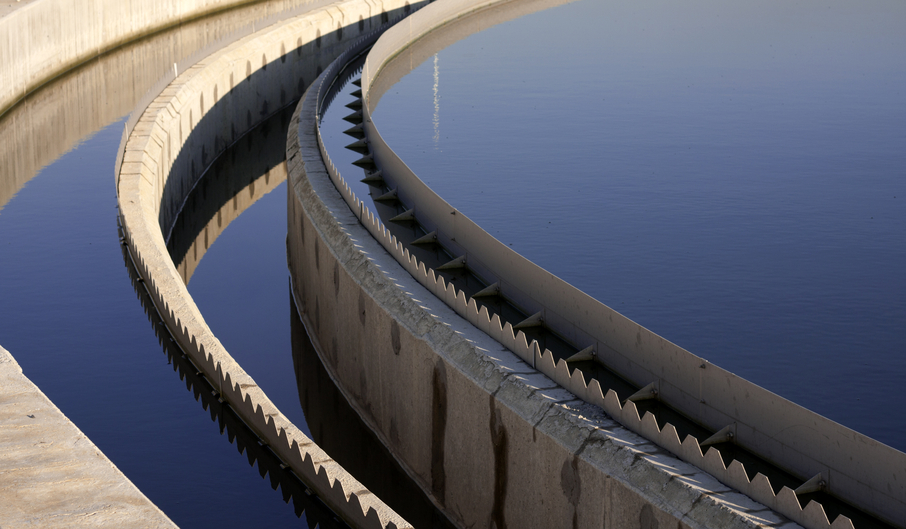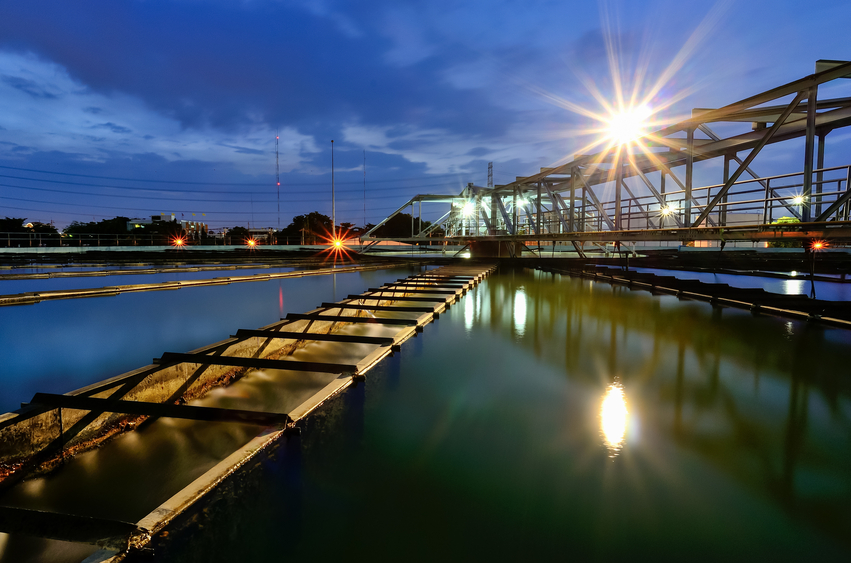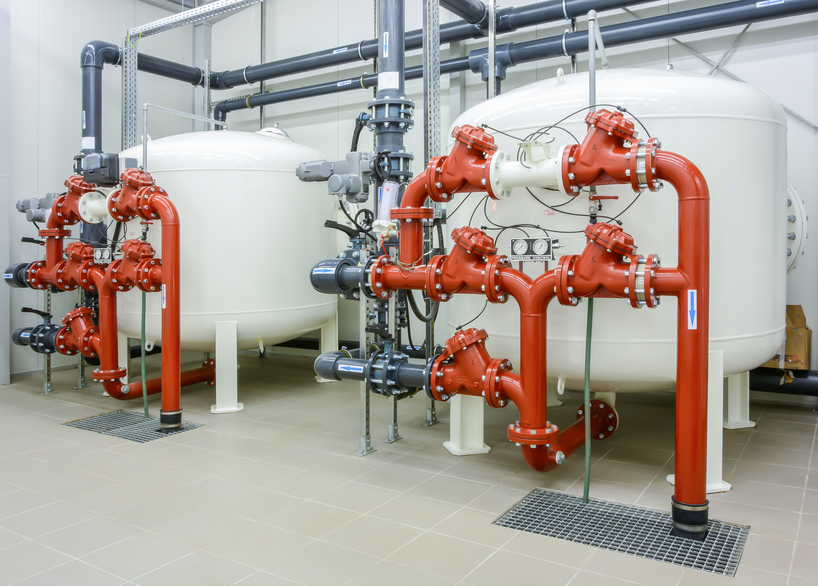Maine Wastewater 30 PDH Discount Package 3
Courses in this Package
Force Main Rehabilitation (C08-009)
An Introduction to Domestic Wastewater Treatment (C02-029)
Background Use of Onsite Wastewater Treatment Systems (C02-008)
An Introduction to Wastewater Collection and Pumping (C08-010)
An Introduction to Control and Chemical Feeding for Wastewater Treatment (C02-051)
Constructed Wetlands for Water Purification (C08-023)

This online engineerng PDH course presents the characteristics of force main systems, as well as force main system selection, design, operation and maintenance.
Force mains that carry sewage flows under pressure represent a special set of challenges for sewer rehabilitation. A rupture of a sewer force main could release millions of gallons of raw sewage into the environment posing significant health risks to the general public and significant impacts to the environment. As some of the newer rehabilitation technologies develop a positive track record of use in sewer force mains and confidence in their design approach and installation process strengthens, more utilities are willing to consider these technologies as potential renewal solutions.
This 8 PDH online course is applicable to engineers involved with the design, construction, operation, maintenance, and/or rehabilitation of sewer force mains.
This PE continuing education course is intended to provide you with the following specific knowledge and skills:
- Introduction to force mains
- Understanding the characteristics of force main systems
- Understanding the renewal practices and technologies for force main systems
- Considerations and methods for technology selection considerations
- Considerations and methods force main system design and QA/QC requirements
- Considerations and methods for operation and maintenance of force main systems
In this professional engineering CEU course, you will need to review the EPA publication "State of Technology Report - Force Main Rehabilitation", EPA/600/R-10/044 - March 2010.
Upon successful completion of the quiz, print your Certificate of Completion instantly. (Note: if you are paying by check or money order, you will be able to print it after we receive your payment.) For your convenience, we will also email it to you. Please note that you can log in to your account at any time to access and print your Certificate of Completion.

This online engineering PDH course will introduce you to the basics of domestic wastewater treatment. You will learn about preliminary measures, pretreatment, primary, secondary and advanced treatment processes, and sludge treatment and disposal. Approximate performance data for different treatment processes will be included, as well as comments on operational characteristics of processes. Basic design considerations for selecting treatment processes and sizing plants will be discussed. Normal domestic, non-domestic and industrial wastewater characteristics will be considered, as will the impact of stormwater on domestic wastewater treatment plants. Factors to be considered in site selection will be addressed.
This 2 PDH online course is intended for engineers and other design and construction professionals interested in gaining an understanding of the process technologies, equipment and design practices needed to treat domestic wastewater and treat and dispose of the resultant sludge.
This PE continuing education course is intended to provide you with the following specific knowledge and skills:
- Learning the design and operational objectives of domestic wastewater treatment plants
- Learning about the major factors to consider in siting domestic wastewater treatment plants, including topography, availability of a suitable discharge point, working and public areas, and community master plan considerations
- Learning about typical compounds that inhibit biological wastewater treatment processes and how they can be mitigated
- Learning the definitions and characteristics of preliminary, primary, secondary and advanced domestic wastewater treatment processes
- Learning about preliminary treatment processes including equalization, neutralization, temperature adjustment, nutrient addition, screening and grit removal
- Learning about primary treatment processes including sedimentation and dissolved air flotation
- Learning about secondary treatment processes including activated sludge, aerated ponds, aerobic-anaerobic ponds, trickling filters, chemical oxidation, chemical mixing flocculation and clarification, gravity filtration, pressure filtration, dissolved air flotation with chemicals, and anaerobic contact
- Learning about advanced treatment processes including advanced carbon adsorption, micro straining filtration, land treatment, subsurface disposal, and groundwater recharge
- Learning about sludge treatment processes including anaerobic digestion, aerobic digestion, autoclaving, elutriation, vacuum filtration, centrifugation, sand beds and presses
- Learning about sludge disposal including incineration, wet oxidation, land disposal and sanitary landfills
In this professional engineering CEU course, you need to review the course document titled, "An Introduction to Domestic Wastewater Treatment".
Upon successful completion of the quiz, print your Certificate of Completion instantly. (Note: if you are paying by check or money order, you will be able to print it after we receive your payment.) For your convenience, we will also email it to you. Please note that you can log in to your account at any time to access and print your Certificate of Completion.

This online engineering PDH course describes how onsite wastewater treatment systems (OWTS) have evolved throughout the years along with changing regulations. It also discusses current uses and types (performance-based vs. prescriptive requirements) of OWTS as well as the management program problems associated with such systems. Finally, this course presents initiatives taken to improve onsite system treatment and management.
Onsite wastewater treatment systems have evolved from the pit privies used widely throughout history to installations capable of producing a disinfected effluent that is fit for human consumption. Although achieving such a level of effluent quality is seldom necessary, the ability of onsite systems to remove settleable solids, floatable grease and scum, nutrients, and pathogens from wastewater discharges defines their importance in protecting human health and environmental resources. In the modern era, the typical onsite system has consisted primarily of a septic tank and a soil absorption field, also known as a subsurface wastewater infiltration system, or SWIS.
This 2 PDH online course is applicable to civil and environmental engineers, as well as design and construction personnel involved with the design and installation of onsite wastewater treatment systems.
This PE continuing education course is intended to provide you with the following specific knowledge and skills:
- Regulation of onsite wastewater treatment systems
- Onsite wastewater treatment system use, distribution, and failure rate
- Problems with existing onsite wastewater management programs
- Performance-based management of onsite wastewater treatment systems
- Coordinating onsite system management with watershed protection efforts
- USEPA initiatives to improve onsite system treatment and management
In this professional engineering CEU course, you need to review Chapter 1 of the EPA Onsite Wastewater Treatment Systems Manual, EPA/625/R-00/008, "Background Use of Onsite Wastewater Treatment Systems".
Upon successful completion of the quiz, print your Certificate of Completion instantly. (Note: if you are paying by check or money order, you will be able to print it after we receive your payment.) For your convenience, we will also email it to you. Please note that you can log in to your account at any time to access and print your Certificate of Completion.

This online engineering PDH course will introduce you to the principles and practices of wastewater collection and pumping. You will learn about preliminary sewer design issues, the hydraulic design of gravity and pressure sewers, sewer system layout, appurtenances, and structural design of sewer lines. You will be introduced to the fundamentals of pumped system design, pumping stations and equipment. You will become familiar with sewer piping and pump station components. You will also learn how to approach evaluation and rehabilitation of existing sewer systems.
This 8 PDH online course is intended for civil engineers and other infrastructure design and construction professionals who want to learn about the basic technology, design guidelines and materials and equipment used in design and construction of wastewater collection and pumping systems (sanitary sewer systems) for residential, industrial and commercial developments.
This PE continuing education course is intended to provide you with the following specific knowledge and skills:
- Learning about the approach, requirements, criteria, considerations, and hydraulic calculations used in the design of gravity sewers
- Learning about alternatives to gravity sewer systems that would require deep and expensive trench excavation, such as jacking, boring, and tunneling
- Understanding how the operation and maintenance costs of a pumping station with a forcemain, when capitalized, may offset or be less than the construction costs of a deep gravity sewer system
- Knowing when high groundwater, unstable soil, shallow rock, or extremely adverse topography make gravity sewers, pump or ejector stations unsuitable, low pressure systems using grinder pumps with small diameter pressure sewers may be a solution
- Learning how to calculate the average hourly wastewater flowrate in order to design a sanitary sewer system
- Learning how to calculate extreme peak wastewater flowrates and how to size a sanitary sewer system to accommodate them
- Learning how to design for unintended inflow and infiltration in wastewater collection systems
- Learning about the Manning Formula and how to use it in sewer system design
- Understanding the importance of flow velocity in sewer pipes and velocity guidelines for various flow conditions that may be encountered
- Knowing the basic parameters for sewer pumping station layout
- Familiarizing with the different types of sewage pumps and ejectors and when they are used
In this professional engineering CEU course, you need to review the course document titled, "An Introduction to Wastewater Collection and Pumping".
Upon successful completion of the quiz, print your Certificate of Completion instantly. (Note: if you are paying by check or money order, you will be able to print it after we receive your payment.) For your convenience, we will also email it to you. Please note that you can log in to your account at any time to access and print your Certificate of Completion.

This online engineering PDH course presents criteria on metering, instrumentation, controls, and chemical feeding devices used in wastewater disposal systems. Specific design problems may require departures from these practices; therefore, use these criteria with discretion.
For example, use of computers and microprocessors for data logging, indication, and process control is considered an emerging technology. This technology is presently primarily applicable to large wastewater treatment plants with adequately trained staff to maintain the hardware (greater than 10 Mgd size). However, improvements in electronics, hardware, software, and sensing devices (primarily sensing elements) will make this technology more desirable for smaller plants. Detailed information is not included for such emerging technology because of its state of rapid change and because additional development and application experience need to occur before application to the smaller facilities is justified.
This 2 PDH online course is intended for engineers and other design and construction professionals seeking an introduction to the process technologies, equipment and design practices for controlling and chemically treating industrial and oily wastewater.
This PE continuing education course is intended to provide you with the following specific knowledge and skills:
- Learning about primary measuring devices for wastewater treatment systems
- Learning about discrete and analog control devices and where they are applied
- Understanding the application and limitations of mechanical, pneumatic and electrical signaling systems
- Learning about the different chemical treatments for industrial wastewater streams containing cyanide, metals and oil
- Learning about the different types of chemical feeders and their application and limitations
- Knowing the basics of chemical treatment processes including adsorption, coagulation, oxidization, pH adjustment, precipitation and reduction
- Learning about the basics of metering, instrumentation, and control requirements for industrial wastewater treatment systems
- Learning about chemical handling and feeding systems and operations
- Understanding the function of different chemicals for industrial and oily wastewater treatment
In this professional engineering CEU course, you need to review the course document titled, "An Introduction to Control and Chemical Feeding for Wastewater Treatment".
Upon successful completion of the quiz, print your Certificate of Completion instantly. (Note: if you are paying by check or money order, you will be able to print it after we receive your payment.) For your convenience, we will also email it to you. Please note that you can log in to your account at any time to access and print your Certificate of Completion.

This online engineering course discusses the use of constructed wetlands for the purification of wastewater effluent, with emphasis on the treatment of agricultural and livestock effluent.
The constructed wetland is a shallow, earthen impoundment or group of cellular impoundments, which contain hydrophytic vegetation, designed to treat both point and nonpoint sources of water pollution. Its primary physical components include the aquatic vegetation, substrate for plant and microbial growth, the basin or cells, associated structural devices for water management, and the water that flows through the system.
In wetland ecosystems, there are biological, chemical, and physical processes that naturally clean and filter water. The waste treatment mechanisms it employs are a complex mix of physical, chemical, and biological processes. Manmade constructed wetlands are designed to mimic the processes found in a natural wetland ecosystem. They use wetland plants, soils, and microorganisms to clean water in a way that is often less expensive than more traditional water treatment systems. When properly designed, built, and operated, a constructed wetland can provide high quality water treatment, while also adding aesthetical enhancement and wildlife habitat to your site.
This 8 PDH online course is intended for environmental, civil, water resources, hydraulic, land development, and other technical personnel interested in gaining a better understanding in the use of constructed wetlands for the purposes of water purification.
This PE continuing education course is intended to provide you with the following specific knowledge and skills:
- Learning about the purpose, benefits, and types of constructed wetlands
- Familiarizing with the nutrient reduction process
- Understanding the floating aquatic plant systems
- Familiarizing with the protection of surface and groundwater sources
- Learning about treatment processes and biochemical conversions
- Understanding volatilization of ammonia, soil interaction, and nutrient uptake
- Knowing how to plan for a constructed wetland
- Familiarizing with pretreatment and wastewater characterization
- Learning about soils and effluent storage, topography and land area, flood plains and water sources, as well as hydrologic and climatologic data
- Understanding the impact of toxic substances on wildlife
- Knowing how to design for phosphorus removal
- Familiarizing with wetland configurations and layouts
- Learning about embankments, liners, inlet and outlet structures
- Learning about the operation, maintenance, and water budget
- Familiarizing with emergent herbaceous plants, and aquatic and wetland plant types
In this professional engineering CEU course, you need to review the course document titled, "Constructed Wetlands for Water Purification" by Donald Parnell, PE.
Upon successful completion of the quiz, print your Certificate of Completion instantly. (Note: if you are paying by check or money order, you will be able to print it after we receive your payment.) For your convenience, we will also email it to you. Please note that you can log in to your account at any time to access and print your Certificate of Completion.